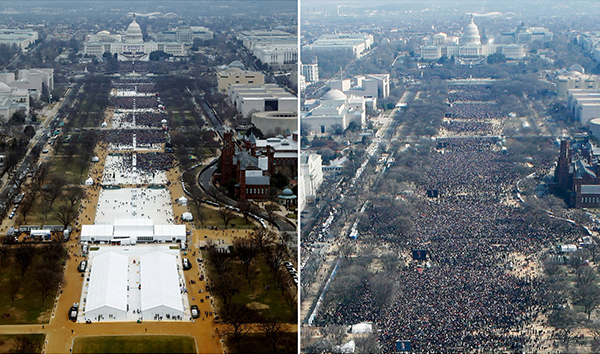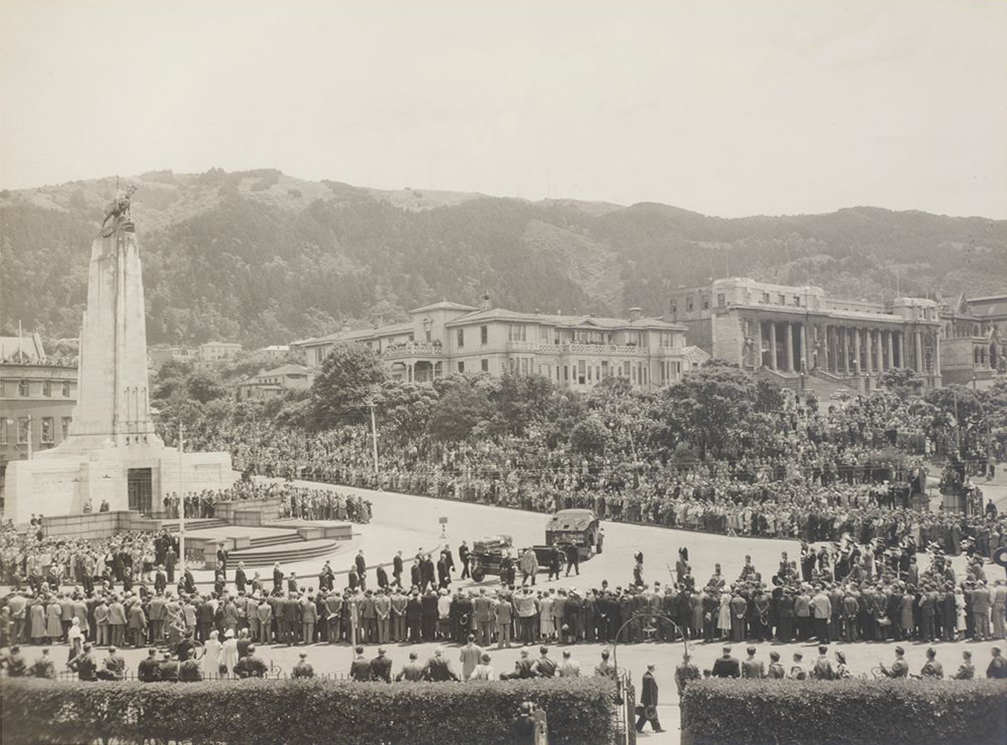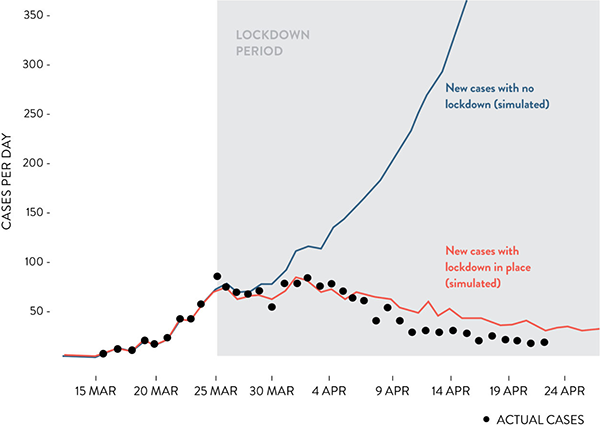Democratic climate-action mobilisation or martial law


Planet of the Humans: The Planet of the Apes construct that spawned nine films and two television series also provided Dr James Hansen with the 2525 science-fiction scenario with which he ends his first popular book. Dr Hansen’s upcoming second book provides the cold comfort that a 500-year timespan is too short for Earth’s oceans to literally boil. artist Harry Schaare
That thatoriginally published sans grammatical double-copula which should have been one of the most influential books of all time ranks 302 209 places behind Nevil Shute’s On the Beach of Amazon’s best sellers, speaks volumes.
Comparing Nevil Shute Norway’s fiction with Dr James Hansen’s non-fiction Storms of My Grandchildren is, of course, odious. But the thrall in which possible nuclear annihilation so readily held the world in 1957, contrasts with the complacency regarding the guaranteed slow-motion annihilations of anthropogenic global heating.
It is to be hoped that Dr Hansen’s second popular book, Sophie’s Planet, which presumably will be published this year, during the 11th anniversary year of his first, will positively race up the best-seller rankings to a position closer to Nevil Shute’s novel, or at least to Pierre Boulle’s Planet of the Apes, at 115 155, on Amazon’s ranking. The epically successful nine-film, two-television-series media franchise sparked by Boulle’s Planet of the Apes, provided the name for Michael Moore’s Planet of the Humans latest, renewablist-maligned, blockbusting iconoclasm.

Climate-Fiction Fighter: Dr James Hansen 42 years before utterly casting scientific reticence to the wind by including an existential-threat runaway greenhouse scenario in his first popular book, which was published a decade ago. That the world’s fiction writers have failed to mobilise humanity to save its home planet underlines how wickedly wicked the problem is. image for University of Iowa Physics Department
In Storms of My Grandchildren, Dr Hansen ends with a 3000-word science-fiction scenario to illustrate the message that burning the entirety of its fossil-fuel inventory could render the planet lifeless, by 2525. The draft of Sophie’s Planet carries an only minimally comforting correction:
Regardless, Dr James Hansen certainly cannot be accused of scientific reticence and addresses existential-threat runaway greenhouse, or as he styles it, et runaway greenhouse—existential threat, equating with impacts so great that that humanity is rendered ungovernable. But as bumptious as it might be to split hairs with the world’s preeminent climate scientist, the state that is more likely to materialise is martial law, for millennia. The instincts of demagogues are all too readily on display in the United States with Donald Trump’s goading of governors with the threat to use military force against those exercising their First Amendment rights, or in Winston Peters’ pallid New Zealand echo, when asked whether he wanted physical distancing rules to be relaxed or the George Floyd-protestors flouting them prosecuted, responded:
Both, frankly.
Putting aside the egregious incarceration rate of Māori, as just one measure of systemic racism in Aotearoa, and ample cause for solidarity for events “12 000 kilometres away”, the administration, whether in China or the United States, so long as it is in control of its military, will promptly crack down on that part of its populace as becomes dissident, with as much force as necessary, and then some. Even before the excuse of a pandemic, Donald Trump threatened to retain power by force—actually, before being elected, with a minority of the popular vote. It has to be imagined that the degree to which he is prepared to disregard an adverse election result in November would depend entirely upon the military he derides as:

Liar-in-Chief from Day-One: That the Republican Party doubled down on its unpopularly-elected president from day one, when he lied about the embarrassingly small crowd his inauguration attracted, rather than call him out for it, was just the beginning of his four-year term of unmitigated mendacity. The world should hope that now the worms are turning, and that Admiral Philip s Davidson, despite his covid-19 risk-taking, will not allow the United States Indo-Pacific Command to made to dance like a puppet. image The Guardian
There is absolutely no guarantee the current military disquiet will solidify sufficiently for it to defy the commander-in-chief, should the electoral illegitimacy of Donald John Trump’s remaining in office post 20 January 2021 be manifestly apparent. And between now and then, the opportunity to tangle militarily with China, to create the mother of all diversions will be terribly tempting. But with even George w Bush—who was all too happy to whip up the u s a-chanting thirst for vengeance that primed public support for the 2003 invasion of unconnected Iraq—braking ranks with his president, it could be that Trump is cowered by his generals and prevented from pursuing military misadventure on a Blair–Bush scale.
It is instructive that climate-fiction has not submerged science-fiction. Perhaps too many readers see life remaining altogether too terrestrial and pedestrian, in the near, sub-warp-speed, future. For whatever reason, the year 2121 has yet to acquire the dystopian potency of 2525, much less 1984, which is ironic, given that 2020 will probably mark the cusp of when humanity averted, or failed to avert, a covid-19-plus-climate precipitated, terminal descent into authoritarianism.

Funeral for a World Leader: While others were busy getting back to normal, New Zealand’s World War II prime minister, Peter Fraser, put his remaining energies into attempting to build a United Nations that would prevent the world sliding inexorably into the next abyss of global dysfunctionality. Presumably petty party politics prevented his being knighted before his fatal heart attack on 12 December 1950, following hospitalisation with influenza—which still kills, on average, 400 New Zealanders each year, many for the want of better handwashing, and basic physical distancing habits by the infected. image Photo News
Before Derek Chauvin nonchalantly killed George Floyd on camera, covid-19 was five months into demonstrating the depths of global intergovernmental dysfunctionality. Having raised the stakes so recklessly by attempting to incite nation-wide riots, Trump must be emphatically informed by the international community that attempts to consolidate his power domestically by waring offshore will be universally exposed, and not supported. This clear and present danger makes the, now covid-19-delayed United Nations reform and redemption imperative, notwithstanding the long-running asinine conspiracism within the United States painting the organisation as an evil New World Order-in-waiting. Peter Fraser and his colleagues would surely never have envisioned the further lengths that the malevolent would have sunk to, within 75 years, to thwart an organisation devised to prevent the interactions between countries descending straight back into dysfunctionality.
In Sophie’s Planet, Dr Hansen details the work that led to unravelling the previously mysterious atmosphere of Planet Venus. His phd thesis proposition, for Professor Carl Sagan, was to model light scattering to ascertain whether it better matched for atmospheric dust or ice. Ironically, given the existential implications of Earth’s recent increase of ~137 parts per million of atmospheric carbon dioxide, to 0.042%, the concentration on Venus was found to be a crushingly, superheating 96.5% co2. That Planet Earth could, like Venus, also boil off its oceans, should hugely exercise any human with an ounce of curiosity, or concern for species survival. But the 2525 timeframe of the Storms of My Grandchildren runaway-greenhouse scenario, Dr Hansen has since determined, is climatically implausible. Putting aside that science fiction blithely accommodates warp-speed space travel and teleportation, scientifically grounded future fiction, potentially, could greatly help alert the curious as to the shape of the struggle to salvage a survivable climate.

Contrast Could Not be Greater: With her first name emblazoned on her chest, United Nations peacekeeper Major Samia Rehman, and her work in the Congo, are a million miles from the unidentifiable uniformed thugs deployed by Trump to intimidate protesters in Lafayette Square. That men outnumber women United Nations peacekeepers by 94%, is, shamefully, just one hideous aspect of the organisation that is almost impervious to reform. image United Nations Organization Stabilization Mission in the DR Congo
Dr Hansen is emphatic that, technically, existential-threat runaway greenhouse can be averted. However, the intergovernmental response of the last 32 years, and of the last 5 months, suggests that the odds for humanity and its fellow species are vanishingly small. And, the evidence is also that, as the global crises plays out, states, rather than become ungovernable, will be tightly governed, by martial law with scant value for the welfare of folk finding themselves in the wrong place and the wrong time, even if that happens to be their own castle.
As a country that has committed its share of sins at home and abroad, Aotearoa, humbly, can still be a beacon by reforming its democracy—particularly its corrupted campaign finance practices—and picking up where Peter Fraser left off with the United Nations.
But most critically, Aotearoa needs to demonstrate democratic climate-action mobilisation, as an imminently achievable alternative to existential-threat runaway greenhouse, and to martial law.
Achilles’ Heel of current strategies The following are the two concluding paragraphs of Asymptomatic Transmission, the Achilles’ Heel of Current Strategies to Control Covid-19, published 28 May 2020:
Ultimately, the rapid spread of Covid-19 across the United States and the globe, the clear evidence of SARS-CoV-2 transmission from asymptomatic personsArons MM, Hatfield KM, Reddy SC, et al. Presymptomatic SARS-CoV-2 infections and transmission in a skilled nursing facility. N Engl J Med. DOI: 10.1056/NEJMoa2008457, and the eventual need to relax current social distancing practices argue for broadened SARS-CoV-2 testing to include asymptomatic persons in prioritized settings. These factors also support the case for the general public to use face masks when in crowded outdoor or indoor spaces. This unprecedented pandemic calls for unprecedented measures to achieve its ultimate defeat.

Becoming Wise Before the Event: Despite now experiencing 17 pandemics—and 6 of those since 2002—the world was found to be pitifully ill-prepared for when, with predictable unpredictability, this current pandemic manifested. Preparing for the potentially far-deadlier effects of anthropogenic global heating, as well as being an inescapable existential imperative, can, simultaneously, better equip humanity to respond to epidemics, and prevent more becoming pandemics. Here, the initially all-but-imperceptible case-infection rates displayed for India and Indonesia were grave indicators of governments in desperate denial of their countries’ now-destined roles in the raging pandemic—and early exemplar Singapore demonstrates the ruinous consequences of neglecting its most vulnerable workers. Nigeria, however, scams all 207 million of its citizens, by testing fewer than 1% of them, thus hiding the appalling impact of the pandemic there. Australia long-since lost her battle to keep within cooee of covid-19-test-kit-exporter extraordinaire South Korea’s standout response. Aotearoa, meantime, has flat-lined in a good way. All countries’ infection rates are under-reported, some because a few cases, particularly early in the pandemic, are misdiagnosed, but in other countries monstrously, due to dysfunction and/or lack of transparency. The diameter of each line on this graph is proportional to the country’s population. graph Mahurangi Magazine | data Our World in Data 12 November 2020
Join FluTracking now and help prevent future pandemics…
Salutary Lesson in Seasonal Influenza: Physical distancing has also paid dividends in reducing the annual toll extracted by flu that, despite its deadliness, is treated as an inconvenience rather than the killer it is, particularly of the very young, the elderly, and the pregnant—“On average, approximately 400 deaths are attributed to influenza and its complications annually.” covid-19 provided the opportunity to begin collecting flu-symptom data earlier than was done 2018–2019. graph Department of Health Australia | Ministry of Health Aotearoa | labels Mahurangi Magazine

New Zealand’s Altered Future: Moving nine days faster than Ireland, and more emphatically physically distancing, Aotearoa has avoided Ireland’s near vertical trajectory—until the middle of May—of reported covid-19 cases. Ireland’s prime minister then donning his sweats was perhaps great optics, but responding to, for example, fellow general practitioner Dr Marcus de Brun, or to nursing-home representatives more than seven weeks earlier, would have constituted a far more heroic course of action. Aotearoa, for its own survival, now needs to convince the world to alter its determinedly fossil-fuelled future. chart New Zealand Geographic | Te Pūnaha Matatini
